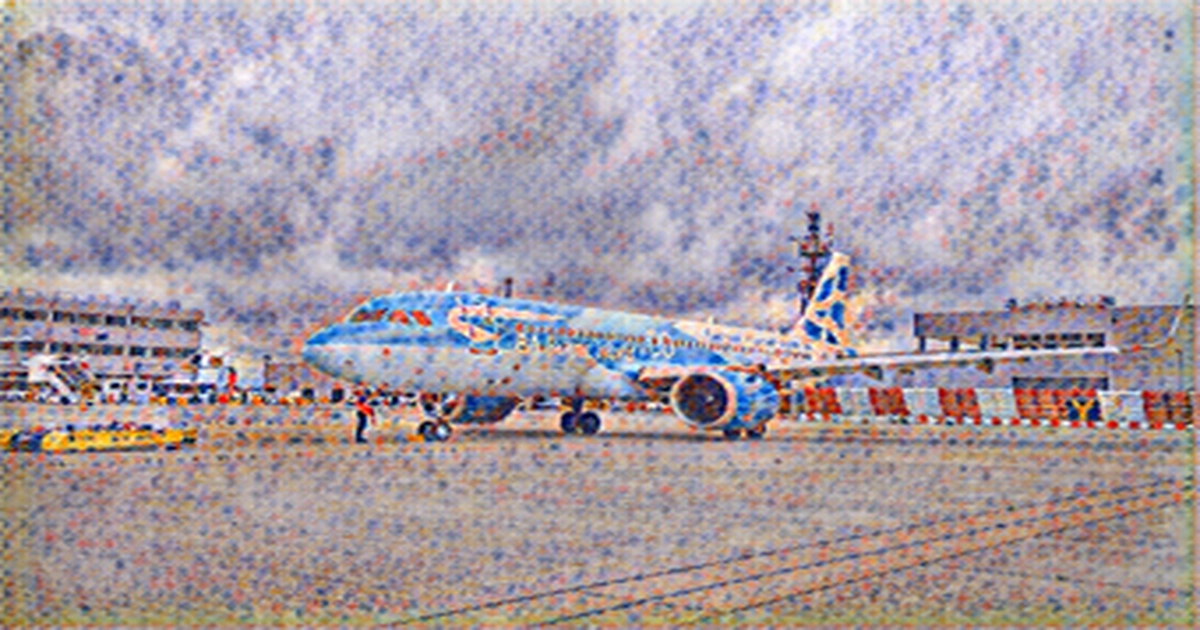
British Airways announced Wednesday that it had flown its first-ever passenger flight to be powered directly by sustainable aviation fuel SAF Remaining emissions for Tuesday's two-hour flight from Glasgow Airport to London Heathrow Airport were produced as business emissions, the airline said.
The airline teamed up with Heathrow, air traffic service provider NATS, fuel giant BP, Glasgow Airport and Airbus to operate a short carbon-neutral flight, which left Heathrow at 10: 36 on Tuesday September 14, 2021 and arrived in Glasgow at 11: 28 local time, British Airways said.
The aircraft's special livery was painted in partnership with Airbus.
The first carbon-neutral flight replicated a journey to Edinburgh made 11 years ago and British Airways noted that in 2010 neither offsetting nor sustainable aviation fuel were available to reduce the flight impact on the environment. In addition, the preceding flight was operated on an older aircraft carrying fewer passengers.
This year's Perfect Flight was flown to show how much the aviation industry has progressed in its efforts to decarbonize over the last decade, according to British Airways.
The new flight included lighter seats, catering trollies, and replaced flight manuals and in-flight magazines with all digital downloads in an effort to lose the weight of aircraft.
An Airbus A 320 neo used by the company for the flight is 20% less fuel, 20% less carbon dioxide and is 50% quieter compared to its predecessor from 2010.
The traditional aviation fuel provided by BP was blended at 35% with sustainable jet fuel.
BP SAF is comprised of sustainable feedstocks like recycled cooking oil and household waste and produces up to 80% less lifecycle carbon emissions than traditional jet fuel.
The flight was pushed back with one of the British Airlines' Green Cars powered by Heathrow's 100% renewable energy, powered by motor vehicles.
Only one of the A 320 neo's engines was used to taxi to the runway and air traffic controllers at NATS directed the aircraft on its continuous climb and descent, allowing the jet to avoid leveling off, which causes an increase in fuel burn, the airline said.
The Perfect Flight's climb speeds were set in advance and the flight was able to land without airborne holding.
Upon landing in Glasgow the A320 neo's second engine was taxied on as it turned off.
This year s flight achieved a 62% CO 2 emissions reduction compared with the flight in 2010 34% from more efficient aircraft and operations, 28% from the use of renewable aviation fuel with the remaining 38% offset using high quality verified carbon offsets, British Airways said.
This flight offered a practical demonstration of the progress we made on our carbon reduction journey, British Airways CEO Sean Doyle said in a statement. By working with our industry partners we have delivered a 62% improvement in emissions reductions compared to a decade ago. This marks real progress in our efforts to decarbonize and shows our determination to continue working with governments and industry and accelerating the adoption of new low carbon solutions to get us closer to the perfect flight of the future. Earlier this month, the airline launched its BA Better World sustainability program and its parent company, International Airlines Group, recently committed to operating 10% of its flights using SAF by 2030.
British Airways has committed to achieving net zero carbon emissions by investing in new aircraft, developing sustainable aviation fuel and hydrogen-powered aircraft and learning carbon capture technology.
